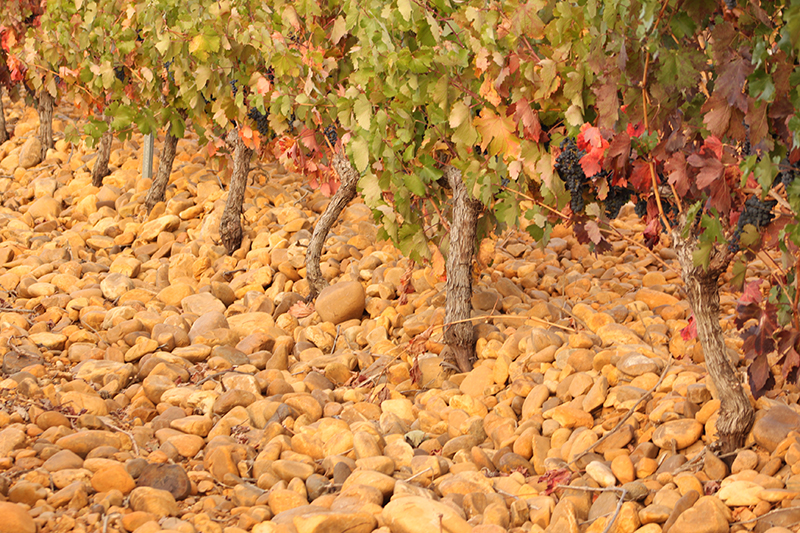November arrives, and with it, the cold in León. Gone are the days of heat in which you had to shelter from the sun, to give way to frigid temperatures that invite you to look for any minimum ray that can warm you. Once the harvest season is over, it is time to start thinking about the next natural step in the vineyard: pruning. However, there are many doubts about when it should be done, what types are there and how it should be done. In this post we will try to solve them all.
November arrives, and with it, the cold in León. Gone are the days of heat in which you had to shelter from the sun, to give way to frigid temperatures that invite you to look for any minimum ray that can warm you. Once the harvest season is over, it is time to start thinking about the next natural step in the vineyard: pruning. However, there are many doubts about when it should be done, what types are there and how it should be done. In this post we will try to solve them all. contributes to the regulation and balance of the plant. It facilitates the circulation of the sap by eliminating dry buds, prevents the spread of diseases and reduces the aging of the vine.
. It facilitates the circulation of the sap by eliminating dry buds, prevents the spread of diseases and reduces the aging of the vine.
. It facilitates the circulation of the sap by eliminating dry buds, prevents the spread of diseases and reduces the aging of the vine.. One of those moments is pruning, which is more important than you might think a priori. In addition, it is not done the same in all vineyards, but rather depends on the planting method, the amount of water in the land and the age of the plant, among other factors.
. One of those moments is pruning, which is more important than you might think a priori. In addition, it is not done the same in all vineyards, but rather depends on the planting method, the amount of water in the land and the age of the plant, among other factors.
. One of those moments is pruning, which is more important than you might think a priori. In addition, it is not done the same in all vineyards, but rather depends on the planting method, the amount of water in the land and the age of the plant, among other factors. “asleep” . One of those moments is pruning, which is more important than you might think a priori. In addition, it is not done the same in all vineyards, but rather depends on the planting method, the amount of water in the land and the age of the plant, among other factors. winter pruning It is usually done on dry and cold days, since low temperatures prevent the plant from developing infections.
It is usually done on dry and cold days, since low temperatures prevent the plant from developing infections. early pruningIt is usually done on dry and cold days, since low temperatures prevent the plant from developing infections. late pruningIt is usually done on dry and cold days, since low temperatures prevent the plant from developing infections.
The pruning in green It is complementary to winter pruning, and it is not always carried out, only in very productive vineyards or when low production is sought in order to increase the quality of the grape when it is going to be used for the production of more special wines. The time to do this pruning is spring, when budding has already begun.
It is complementary to winter pruning, and it is not always carried out, only in very productive vineyards or when low production is sought in order to increase the quality of the grape when it is going to be used for the production of more special wines. The time to do this pruning is spring, when budding has already begun.
It is complementary to winter pruning, and it is not always carried out, only in very productive vineyards or when low production is sought in order to increase the quality of the grape when it is going to be used for the production of more special wines. The time to do this pruning is spring, when budding has already begun. age of the plant also affects: if it is a young vine it is preferable to wait for late pruning, while plants over 3 years old are more resistant to thermal differences and can be pruned earlier.
Another factor that can condition this moment is the orientation of the plant also affects: if it is a young vine it is preferable to wait for late pruning, while plants over 3 years old are more resistant to thermal differences and can be pruned earlier.
of the plant also affects: if it is a young vine it is preferable to wait for late pruning, while plants over 3 years old are more resistant to thermal differences and can be pruned earlier.
of the plant also affects: if it is a young vine it is preferable to wait for late pruning, while plants over 3 years old are more resistant to thermal differences and can be pruned earlier.
- If we consider the life cycle of the plantof the plant also affects: if it is a young vine it is preferable to wait for late pruning, while plants over 3 years old are more resistant to thermal differences and can be pruned earlier.
- Formation pruning: it is the one that is carried out during the first years of the vine. At this time is when it is convenient to adapt the plant to the cultivation method that we want.
- Maintenance pruning: it is the one that is carried out during the first years of the vine. At this time is when it is convenient to adapt the plant to the cultivation method that we want.
- Rejuvenation pruning: it is the one that is carried out during the first years of the vine. At this time is when it is convenient to adapt the plant to the cultivation method that we want.
- Transformation pruning: it is the one that is carried out during the first years of the vine. At this time is when it is convenient to adapt the plant to the cultivation method that we want.
- If we attend to driving system: it is the one that is carried out during the first years of the vine. At this time is when it is convenient to adapt the plant to the cultivation method that we want.
- Guyot system: we are talking about a mixed method in the head where there are short elements (thumbs) and long elements (rods).
- In glass: we are talking about a mixed method in the head where there are short elements (thumbs) and long elements (rods).
- Trellis: we are talking about a mixed method in the head where there are short elements (thumbs) and long elements (rods).
- Depending on the type of intervention : we are talking about a mixed method in the head where there are short elements (thumbs) and long elements (rods).
- : we are talking about a mixed method in the head where there are short elements (thumbs) and long elements (rods). : we are talking about a mixed method in the head where there are short elements (thumbs) and long elements (rods).
- Mechanics: it is possible when the plant is developed in a trellis. Mechanical pruning usually leads to a larger production, but it also requires more water and can age the vineyard faster, as it is not a natural process.
- Mixed: it is possible when the plant is developed in a trellis. Mechanical pruning usually leads to a larger production, but it also requires more water and can age the vineyard faster, as it is not a natural process.
Vine pruning is a process that requires technique, knowledge of the soil and the plant, and perseverance. Good viticulturists have these three qualities, which will result in a much more optimal vine sanitation and, consequently, a better harvest. Even within the same geographical area or denomination of origin, not all vineyards have the same characteristics to carry it out. The key lies in knowing in depth what your vineyard is like, taking into account the weather, humidity and soil conditions, and treating the plant with delicacy and great care.














